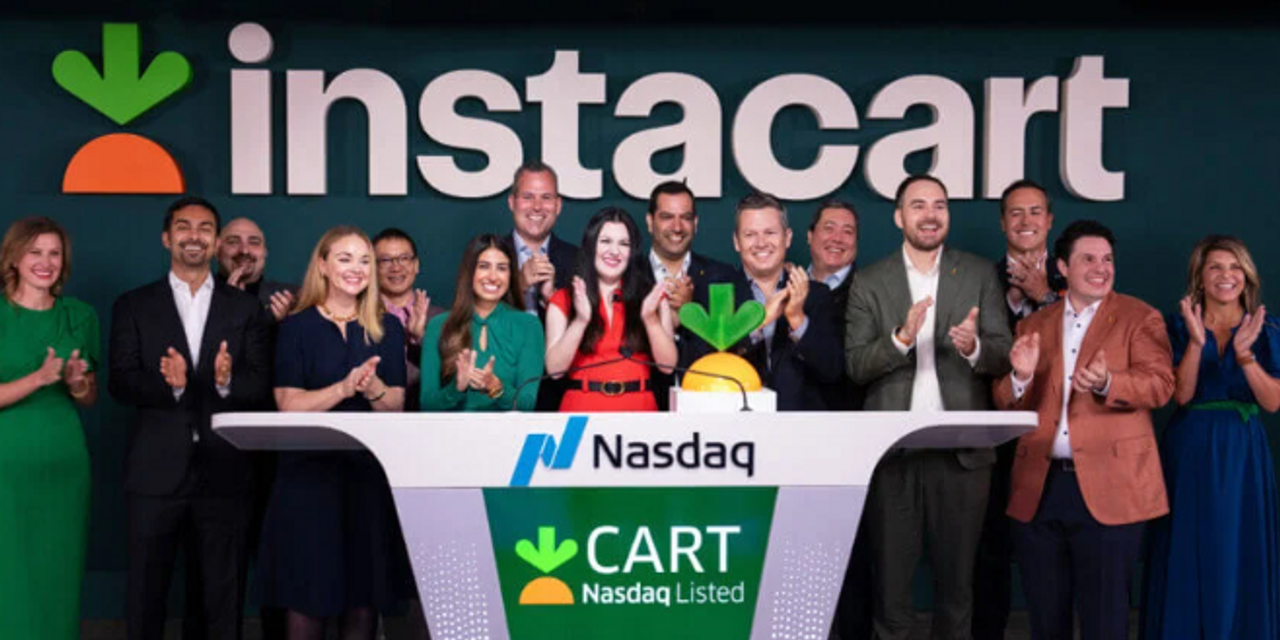Shares of Instacart dipped below the key $30 level for a third straight day, but they still have to fall a lot further to turn one analyst bullish.
In a note titled “The Cart is Full,” BTIG’s Jake Fuller said he started coverage of the grocery-delivery app, officially known as Maplebear Inc.
CART,
with a neutral rating. He did not set a stock-price target. BTIG was not one of the 20 underwriters of the IPO.
The stock fell as much as 2.3% to an intraday low of $29.95, or 0.2% below the $30 initial public offering price, before bouncing slightly to trade a penny above the IPO price in afternoon trading.
After debuting at $42 on Sept. 19, the stock closed its first day at $33.70. It hit an intraday low of $29.96 on Wednesday before closing at $30.10, and it traded as low as $29.90 on Thursday before closing at $30.65.
Read: Instacart IPO: 5 things to know about the app that’s looking to ride a ‘massive digital transformation’ in grocery shopping.
Fuller is meh on the stock because he believes that “valuation is fair relative to modest growth prospects and challenging competitive dynamics.” He noted that both Uber Technologies Inc.
UBER,
and DoorDash Inc.
DASH,
have moved into the grocery-delivery business.
“There are positives here with a strong market position, low category penetration, ancillary opportunities and healthy margins, but modest growth, ramping competition and valuation lead us to a neutral rating,” Fuller wrote in a note to clients.
Basically, he sees a lot of room for Instacart to grow, and the business is very profitable, but the market is getting crowded.
For Fuller to turn bullish, he said the stock would have to fall to the mid-$20s. That implies a roughly 17% discount to the IPO price.
Also read: Klaviyo, Instacart and Arm Holdings’ stocks mixed as shine comes off recent crop of IPOs
Fuller is the second analyst to initiate coverage of Instacart. The first was Needham’s Bernie McTernan, who started the stock at hold, citing expectations that overall online grocery sales will come in below projections and that competition will increase.
Read the full article here










